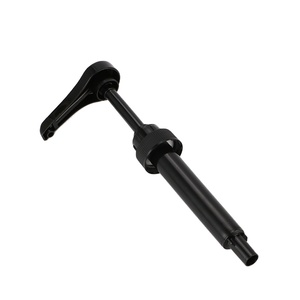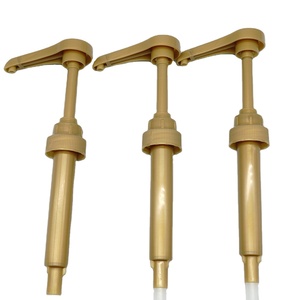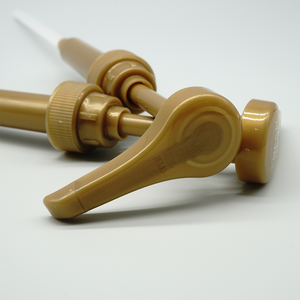Types of 49cc Bicycle Engine Kits
A 49cc bicycle engine kit allows users to convert their standard bicycles into motorized rides. These kits come with all the necessary components required for the conversion, and they include:
-
Two-Stroke Engine Kits
Typically, the two-stroke engine kits are the most common and popular choice among cyclists because they are affordable and easy to install. Additionally, they are very lightweight compared to other engine kits. Their lightweightness means they have a minimal impact on the overall weight of the bike, ensuring that speed is not hampered. Moreover, they feature a simple design, making them easy to install even for people who are not experienced with mechanical work. The two-stroke engine kits offer a decent amount of power, with most engines ranging between 40cc and 50cc. This makes them suitable for daily commuting and light recreational use.
-
Four-Stroke Engine Kits
Four-stroke engine kits are known for their fuel efficiency and quiet operation. Unlike the two-stroke kits, they do not require mixing fuel with oil. This makes them more environmentally friendly, with lower emissions. Moreover, the four-stroke engine kits are generally more powerful than the two-stroke kits, providing better acceleration and top speed. The only downside is that they are heavier and more complex, making installation more challenging.
-
Electric Bicycle Conversion Kits
An electric bicycle conversion kit is a more modern approach to bicycle motoring. These kits include an electric motor, a battery, and all the necessary components to convert a regular bike into an electric bike. The motors range from 250W to 1000W, offering various power levels. The conversion process is more complicated than a two-stroke or four-stroke engine kit, but the end result is a bike with pedaling assistance and adjustable speed settings. Moreover, electric bikes are becoming popular because they do not require a driver's license or registration in many countries.
-
High-Performance Kits
High-performance kits are designed for people who want more from their bicycle engine. These kits come with upgraded components, including a high-compression cylinder, performance carburetor, exhaust systems, and reeds. Installing these components increases the power output of an engine significantly. However, installing a high-performance kit requires a high level of mechanical expertise.
Scenarios of 49cc Bicycle Engine Kits
The 49cc bicycle engine kits are versatile and can be used for different applications. Here are some of them:
- Commuting: The engine kits are used to convert regular bicycles into motorized bicycles. This helps to create an affordable and efficient means of transportation for navigating through heavy traffic and reaching workplaces, schools, and other places.
- Delivery Services: Motorized bicycles are used in the delivery industry to execute quick and efficient deliveries. Restaurants, couriers, and other businesses use them to handle tasks in a short time, especially when delivering to clients within a short distance.
- Leisure and Recreation: Leisure and recreational rides are made fun with bicycles powered by an engine kit. Users enjoy exploring parks, trails, and neighborhoods on the motorized bicycles. The engine kits also offer an alternative to strenuous pedaling, making leisure rides enjoyable for people looking for fun and those seeking exercise.
- Food and Beverage Industry: Businesses in the food and beverage industry use motorized bicycles to carry products, especially in urban areas where vehicle access may be restricted or parking is limited. With the engine kits, cafes, restaurants, and other businesses are able to make quick deliveries of food and drinks to their customers.
- Urban Mobility: The engine kits are used to convert regular bicycles into motorized bicycles, which help to create an affordable and efficient means of transportation for navigating through heavy traffic and reaching workplaces, schools, and other places.
- Short Trip: The 49cc engine kit is ideal for short trips because it is lightweight and has a low displacement of 49cc. This makes the engine kit easy to handle, and this also makes the motorized bicycle easy to maneuver through busy streets and tight spaces.
- Recreational Use: Recreational users use the engine kit to enjoy rides on trails and parks. The engine kit is simple to install and use, making it a great choice for those who want to enjoy the thrill of a motorized bicycle without dealing with a more powerful engine.
- Taxi Services: Some areas have bicycle taxi services that use motorized bicycles powered by engine kits. They are an affordable transportation option for many residents.
How to Choose 49cc Bicycle Engine Kits
Choosing a bicycle engine kit requires careful consideration of several factors to ensure that the kit meets the user’s needs and preferences. Here are the factors to consider:
- Compatibility with Bicycle Type: It is essential to ensure that the engine kit is compatible with the specific type of bicycle. Different kits are designed for different bicycle models, such as mountain bikes, road bikes, or cruiser bikes. The frame design, wheel size, and overall structure of the bicycle can affect the compatibility of the engine kit. For instance, a kit may be suitable for a standard double-diamond frame, while another might be designed for bicycles with a more unique frame structure. Additionally, some engine kits may be intended for specific uses, such as off-road biking or city commuting, which can also influence compatibility.
- Power and Performance Requirements: Considering the desired power and performance level is crucial when selecting an engine kit. 49cc engine kits offer varying power outputs, affecting the bike's speed and acceleration. If the user intends to use the bike for high-speed commuting, climbing steep hills, or carrying heavier loads, a kit with higher power and torque output would be necessary. Conversely, for light commuting or leisure biking, a kit with lower power may suffice. Understanding factors like torque, horsepower, and how they relate to the engine's intended use can help users choose a kit that meets their performance expectations without over-specifying and incurring unnecessary costs.
- Installation and Maintenance: Evaluating the installation process and maintenance requirements of the engine kit is vital, especially for users who may not have advanced mechanical skills. Some kits come with comprehensive installation manuals, instructional videos, and all the necessary tools, making the installation process more straightforward. Others might require professional installation due to their complexity. Additionally, maintenance needs can vary between engine kits. Regular maintenance, such as oil changes, spark plug replacements, and general engine care, is necessary to keep the engine running smoothly. Users should consider how much maintenance they are willing to perform and choose a kit that aligns with their maintenance comfort level.
Function, Feature, and Design of 49cc Bicycle Engine Kits
Understanding the function, features, and design elements of 49cc bicycle engine kits can help businesses choose the right products to offer customers. Here's a breakdown:
Function
The primary function of a 49cc bicycle engine kit is to convert a regular bicycle into a motorized bike. This allows users to enjoy the pedaling exercise of cycling while having the option to use the engine for assistance or sole propulsion. These kits make it possible to travel longer distances, tackle uphill terrains with ease, and reduce the physical strain associated with manual cycling.
Features
- Engine Type: Most kits feature 2-stroke or 4-stroke engines. While 2-stroke engines are lighter and offer more power relative to their size, 4-stroke engines are known for their fuel efficiency and quieter operation.
- Engine Displacement: At 49cc, these engines are often classified as mopeds in many regions, making them compliant with regulations that require fewer licensing and insurance obligations. The size strikes a balance between power and efficiency, offering adequate torque without compromising fuel economy.
- Mounting Systems: Universal mounting systems ensure the kit can be fitted to different bicycle models. These come with engine mounts, sprockets, chains, and necessary hardware to attach the engine securely.
- Fuel System: Many kits come with carburetors, fuel tanks, and lines. Some include features like automatic oil-fuel mixing to streamline maintenance and usage.
- Electrical Components: Basic electrical components might include a magneto for engine ignition and, in some advanced kits, an alternator for powering lights and other accessories. Some kits include CDI (Capacitance Discharge Ignition) for better starting and smooth operation.
- Transmission: Most kits use a pedal-assist or chain-driven system. Some advanced kits come with bicycle-style gear transmissions, allowing users to adjust the speed to different terrains and conditions.
- Noise Level: 4-stroke kits are generally quieter. However, both 2-stroke and 4-stroke kits can have noise-reducing modifications, such as upgraded exhaust systems and mufflers.
Design
- Compactness: The engines are designed to be compact, ensuring minimal alteration to the bicycle's structure and maintaining the bike's maneuverability and aesthetic appeal.
- Weight Distribution: Engine kits are designed to ensure even weight distribution, preventing balance issues when riding. This is crucial for safety and ease of use, especially at higher speeds.
- Durability: Components are made from durable materials like treated steel, aluminum, and heavy-duty plastics. These not only withstand the rigors of daily use but also resist the elements, ensuring a longer lifespan with minimal maintenance.
- Easy Installation and Removal: Many kits are designed for easy installation and removal, allowing users to convert their bicycle back to a non-motorized version if required. This is particularly useful in areas with fluctuating regulations on motorized bicycles.
- Aesthetics: While functionality is crucial, many manufacturers also consider aesthetics, designing engines and components that blend seamlessly with the bicycle's design and look appealing.
Q&A
Q1: Are 49cc engine kits street legal?
A1: Whether a bicycle with an engine kit is street-legal depends on the local laws. Some places require the engine kit-powered bicycle to be registered as a motor vehicle. In others, the engine kit might require the rider to have a motorcycle license. In some places, the engine kit might make the bicycle street-legal while in others it isn’t. Before purchasing an engine kit, it is important to check local laws to determine if the engine kit is street legal.
Q2: What is the difference between a 49cc and a 2-stroke engine?
A2: The numbers in 49cc refer to the engine displacement, which is the size of the engine. It is measured in cubic centimeters (CC). In general, the higher the engine displacement, the more power it produces. A 2-stroke engine refers to the number of strokes the piston makes to complete one cycle of operation. A 2-stroke engine produces more power than a 4-stroke engine of the same size because it fires once every 2-stroke instead of once every 4-stroke.
Q3: How fast is 49cc?
A3: The speed of an engine kit depends on several factors, including the type of kit, the weight of the rider, and the type of terrain. In general, a bicycle engine kit can go between 25 to 35 miles per hour (40 to 56 kilometers per hour). While the engine kit makes riding easier and faster, it is important to note that its top speed depends on the rider’s safety and the kit’s maintenance.
Q4: Is a higher CC engine better?
A4: Higher CC engines produce more power. However, it is important to note that while a higher CC engine is better in terms of performance, it might not be better in terms fuel efficiency. Higher CC engines consume more fuel. Therefore, buyers should strike a balance between the performance they require and the fuel efficiency they want.






















































